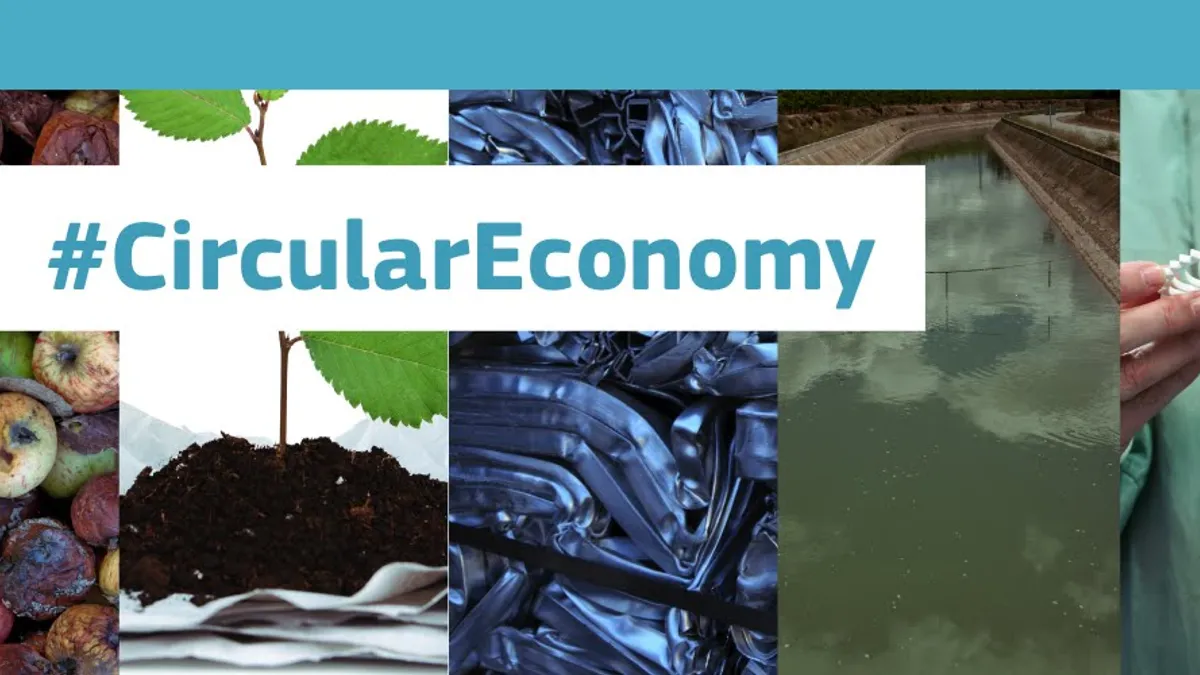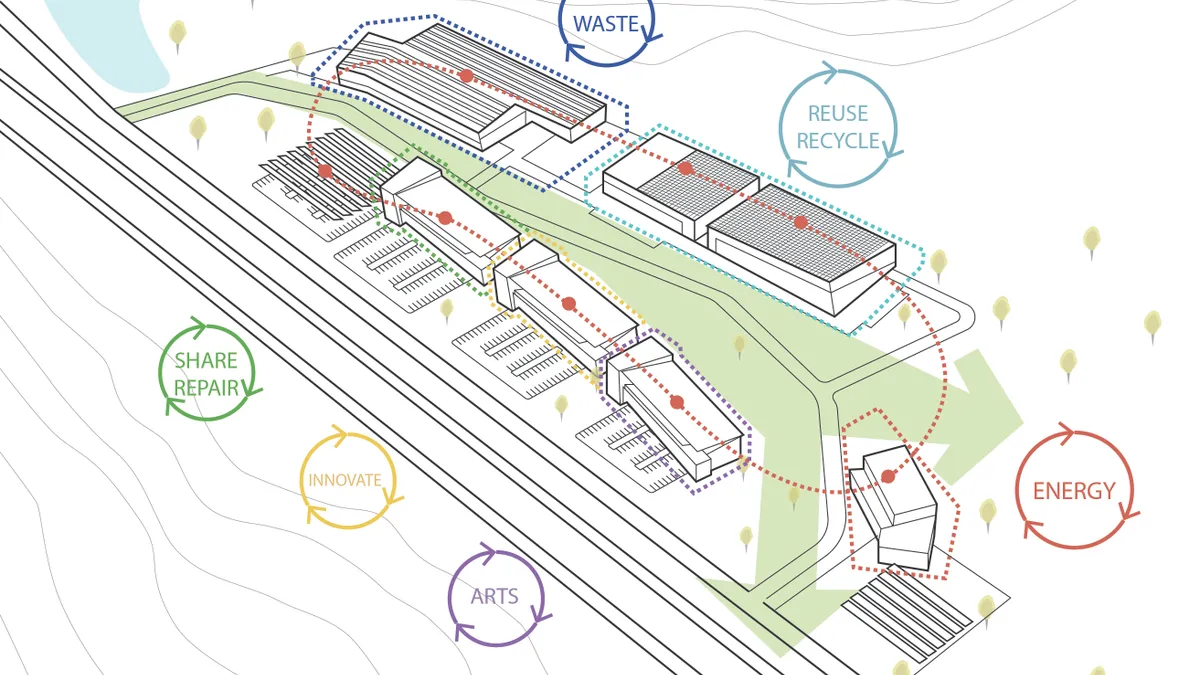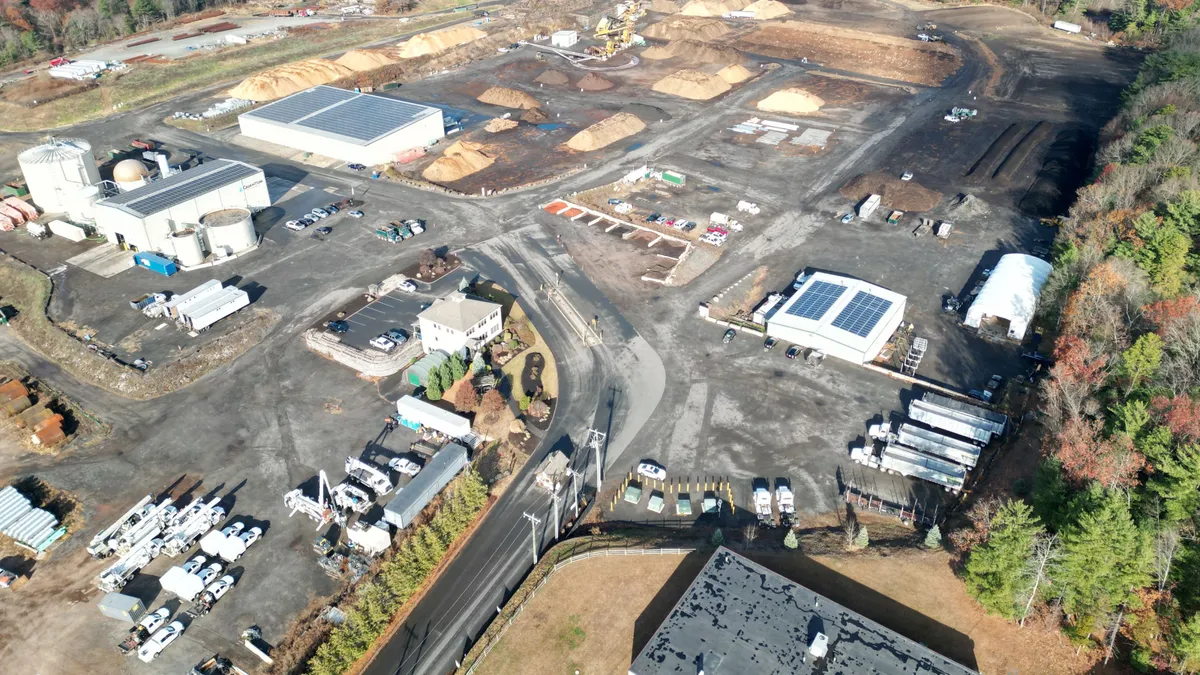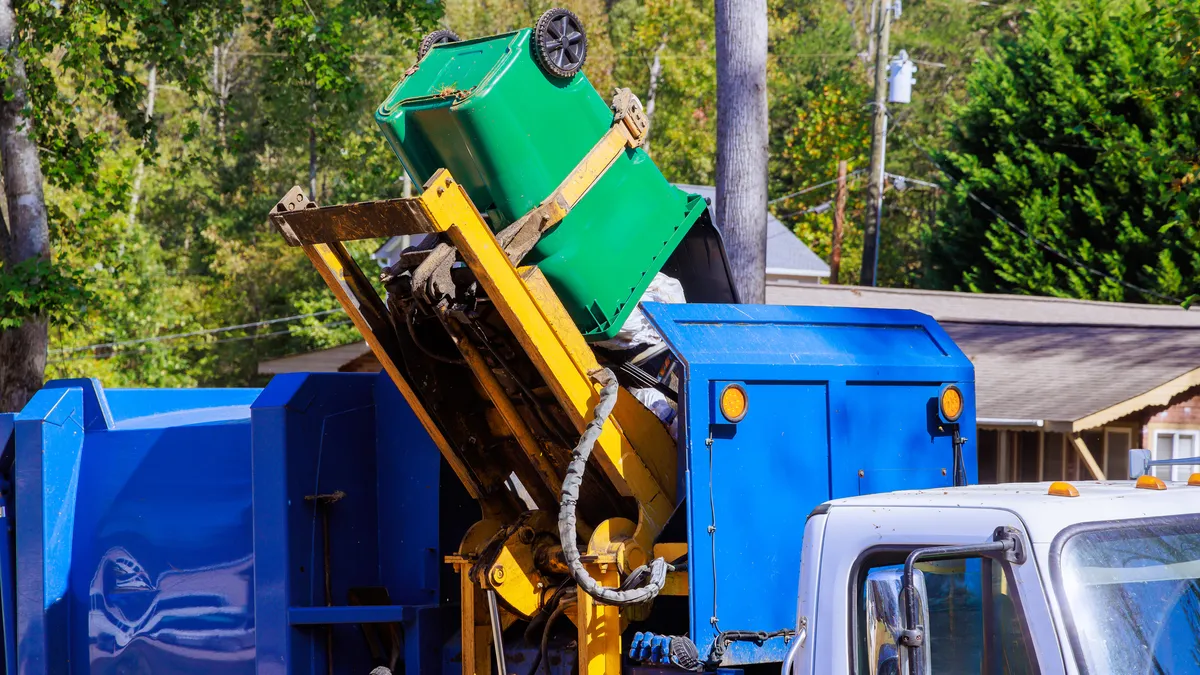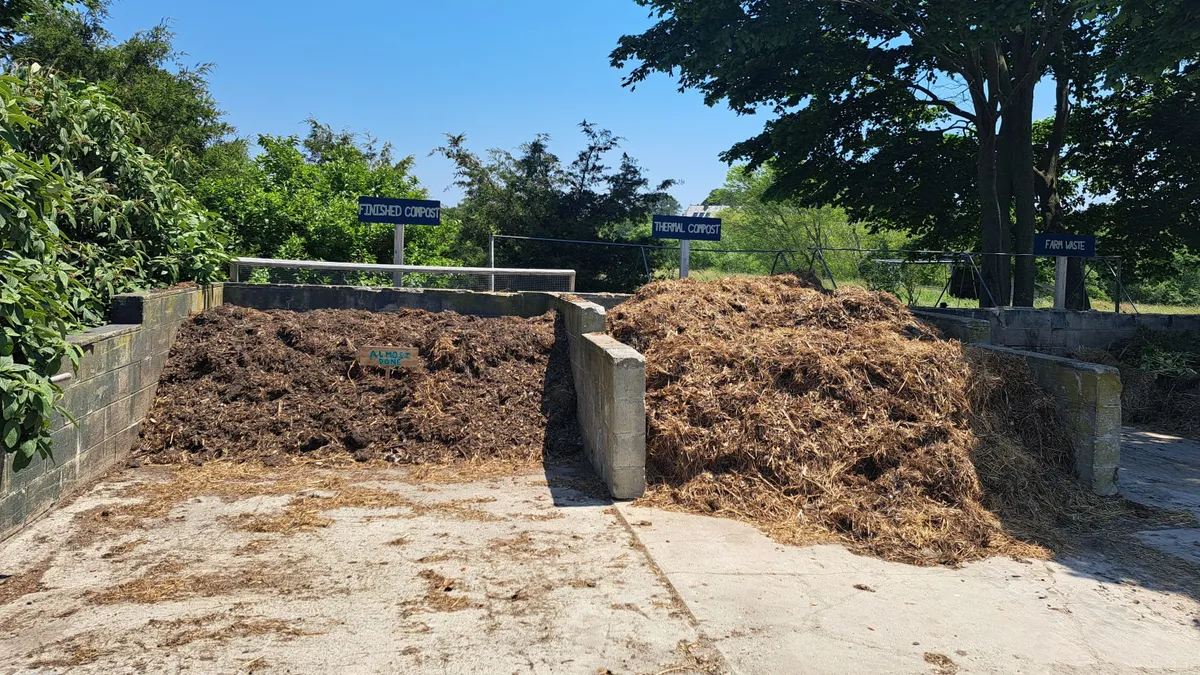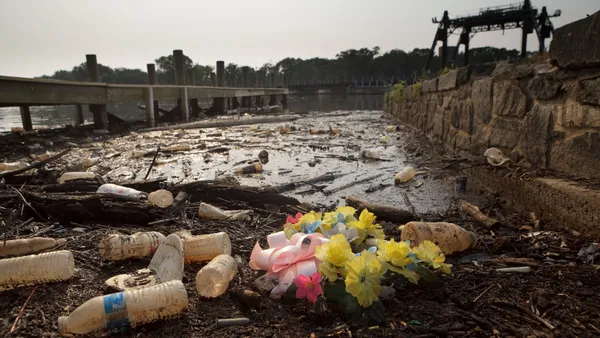In December 2015, the European Commission adopted the Circular Economy Package (CEP) to help European businesses and consumers "close the loop" and ensure that resources are used, reused, and recycled more consistently. The CEP proposes suggestions such as "harmonizing" how waste is defined and calculated among states that adapt to the circular economy, as well as raising the recycling rate target from 50% by 2020 to 65% by 2030.
To further explain this Package and the ripple effect it could have globally, International Solid Waste Association (ISWA) President David Newman gathered with waste industry leaders from around North America on Friday for a discussion hosted by the Solid Waste Association of North America (SWANA). Newman, who has been president of ISWA since 2012, explained the importance of working together on the CEP to ensure an efficient circularity of resources.
"The circular economy, if it's going to function, is not just going to happen on one country or one continent," Newman said to Waste Dive in an interview. "We live in a globalized community. Everything we do has a reflex upon everybody else, and everything that happens elsewhere has a reflex upon us."
David Newman of @ISWA_org here in DC to discuss the #circulareconomy @SWANA pic.twitter.com/OEOxrfDK6Q
— Kristin Musulin (@WasteDiva) March 18, 2016
However adopting a circular economy on a global scale is not easy. While some leaders applaud the CEP, others push back, suggesting that a unified waste calculation system could cause recycling rates to drop in some countries. And what's even more challenging is not all developed countries have truly adapted to recycling yet.
Despite these challenges, Newman explained that it is ISWA's ambition to eliminate waste and promote using resources efficiently. And, in order to achieve a waste-free world, ISWA stands by the circular economy.
"Our little mission is we want a world without a waste. To achieve that mission, we work with everyone who shares a similar idea, similar purpose of how to clean up the world's waste," Newman said.
How a circular economy could benefit our world
Under Europe's Circular Economy Package, the following objectives have been proposed:
- A binding EU recycling rate target of 65% of municipal solid waste by 2030
- A binding EU recycling rate target of 75% of packaging waste by 2030
- A binding EU target to reduce landfilling to a maximum of 10% by 2030
- A ban of landfilling separately collected waste
- New rules on EPR systems and harmonized implementation
- Harmonized calculation methods for recycling rates in the EU
- Measures to promote reuse and "stimulate industrial symbosis"
- Economic incentives for manufacturing green products and supporting recycling efforts
"The definition of recycling is going to change," Newman said to the room full of industry leaders as he explained how the CEP will reshape waste diversion. While target recycling rates have already been achieved by a handful of countries, the majority of Europe has a long way to go to meet their goals — meaning new definitions and practices of recycling will need to be implemented.
The targets are a far reach, and it's not only compliance that could be an obstacle. Newman noted that other known barriers such as financing, regulations, and reshaping mentalities and work experiences could get in the way of a successful transition into the circular economy. He also listed five "unknown barriers" that could affect the success of the CEP: energy markets and future trends, population ageing and migration into Europe, new materials, changing consumption patterns, and political time frames.
"I don't think anybody could have predicted a few years ago that energy would be so low in cost," Newman said. He continued to show charts of how crude oil prices, natural gas prices, aluminum prices, and other commodities have changed over the last 15 to 20 years, pointing out the peaks and pits that indicated unforeseeable changes in the markets.
"How the hell can you build a recycling model on those graphs? It's very, very difficult," he said.
However, the benefits of a recycling model like the CEP are plentiful. Newman explained that the CEP is essential to drive the industry toward more jobs and profitability, increase material and energy recovery, foster new relationships between the waste industry and fast-moving consumer goods (FMCG) companies, and reduce greenhouse gas emissions to meet targets.
"What I'm really proud of is that waste is now part of the climate change agreements," Newman told Waste Dive. "People now realize that by treating their waste properly, they can really get vastly achievable reductions in greenhouse gas emissions ... That message is finally being received. People will now be looking to finance waste management projects and programs in developing countries because they realize the benefit of them."
Reaching targets by combating packaging and food waste
According to Newman, one of the main sources of waste that needs to be redesigned and re-imagined through the adoption of the CEP is packaging. By working with product manufacturers to make packaging more treatable and less damaging to the environment, waste streams will be more easy to manage.
"I think new materials [like bioplastics] are the exciting thing, but it's really important that the waste industry works with who's designing the products so that they can be designed for recovering and recycling," he said.
And it doesn't stop at the type of packaging. Sell-by dates printed on packaging, if changed, could prevent food waste that is created by habitually throwing out "expired" products.
"This drives me bananas, when I see a package of salt with a sell-by date or a jar of honey with a sell-by date. We all know that salt and honey can't go bad, but anybody looking at it in their kitchen is going to throw it away. That's creating waste," said Newman.
Sell-by dates have also aided the enormous amounts of food waste that have been sent to landfills across the world. However, Newman believes that organic waste treatment is the "low-hanging fruit" of the circular economy recycling model, and getting food waste out of landfills and back into soil is crucial for the environment.
Looking at the map below, Newman said, "The red parts are high-risk desertification areas. And really for the United States, getting organic materials back to soil is a critical issue for long-term agricultural sustainability. And that's a role which I think we as waste managers don't fess up to, because we probably don't understand the value that there is in that, but that is a role that I think increasingly is going to become important to us because we need to get organic matter back, otherwise we're not going to be producing food in these areas anymore."
Tackling issues in developing countries
While the world's richest countries look at the Circular Economy Package as an opportunity for increased waste diversion, decreased carbon footprints, and overall cleaner states, the ripple effect will not reach some of the world's poorest countries where waste diversion is needed most.
"I'm still as convinced today as I was when I became president four years ago that the biggest single issue we have is the lack of collection systems in developing countries," said Newman. "That’s the number one biggest issue. We have 70% of the world's waste which is not recycled, 40% of the world's population which has no collections systems whatsoever, and around 2/3 of the world's waste is going into open dumps."
One country in particular, Nicaragua, caught Newman's eye after he saw a presentation on how children across the nation are living and dying in the landfills.
"A lot of kids live in these landfills and are growing up and are even born in them, and they don't know any other life from waste-picking in landfills. They're subject to rape and kidnapping, drug abuse ... So I said we got to get some of them out of there."
In January, ISWA began a scholarship program, "Trading Trash for Education," in which the Association pays for children's schooling, food, clothing, and transportation to schools — along with some money to the parents to substitute the loss of income from the children waste-picking. According to Newman, the program is currently supporting 25 children.
"These are 25 kids whose lives are being transformed, who will no longer die at 25 or 30 years of age from toxic gases in the landfill, but will go on to have a more hopeful life," said Newman. "I think this is the first time the waste industry has actually globally tried to do this and I'm very, very proud."
As countries around the globe come together to tackle waste, the lives of many — in both developed and developing worlds — can be altered significantly. And that unity is what the Circular Economy Package is all about.
"It's about working together," said Newman. "You don't do anything on your own."



